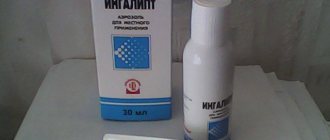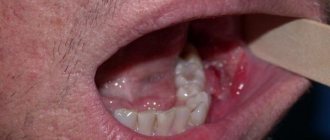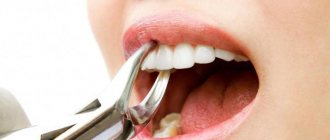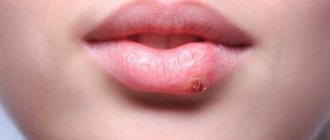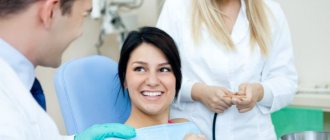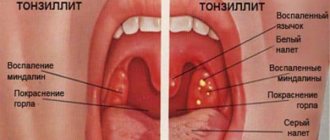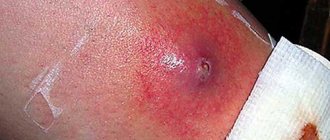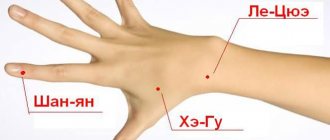April 30, 2020 Last revised: September 12, 2020 Gum disease
Today, antibiotics for dental periodontitis are not used very often. Firstly, there are many modern methods for treating periodontal inflammation, and secondly, antibiotics are a very dangerous thing and there can be many side effects from them. But sometimes antibiotics are very necessary for this type of inflammation.
Recommendations for the use of antibiotics in the treatment of periodontitis
The medical diagnosis and situation dictate the need for antibiotic therapy as an adjunct to the control of active periodontal disease. Antibiotics are selected based on the microbial composition of the plaque. They have been shown to have value in reducing the need for periodontal surgery in patients with chronic periodontitis who are medically at high risk.
Symptoms of periodontitis
In addition, cases of advanced periodontitis and refractory disease may require antimicrobial therapy. However, the drugs cannot be used as monotherapy. They should be part of a comprehensive treatment plan. Therapy should also include root surface treatment, optimal oral hygiene, and continued treatment.
Treatment of periodontitis is always complex
The rationale for pharmacological agents against various forms of periodontitis is that they eliminate the triggering factors and affected tissues. In such cases, it should be emphasized that the use of antibiotics is as important as traditional therapy.
Stages of treatment of acute periodontitis
Although the value of such drugs will likely always be controversial, reports from both the American Academy of Periodontology and the European Federation provide valuable guidance on their use. Both of these reports, which follow extensive data from the literature, determined that patients with periodontitis tend to use systemic antibiotics during treatment.
Systemic antibiotics are used to treat periodontitis.
Sequential and combined drug therapy
Because periodontal disease is accompanied by a large number of microorganisms, one antibiotic cannot eliminate all bacteria. Therefore, it is useful to use more than one agent, sequentially or in combination. Bacteriostatic antibiotics should not be prescribed in combination with bactericidal antibiotics, as they do not function well together.
"Tetracycline"
If both types of medications are required, they must be given sequentially, that is, one after the other. For example, Tetracycline (bacteriostatic) should not be combined with Amoxicillin (bactericidal).
"Amoxicillin"
However, Amoxicillin can be prescribed in combination with Metronidazole.
"Metronidazole"
MTZ with ciprofloxacin and MTZ with augmentin are very effective combinations against refractory and aggressive periodontitis.
Video - Antibiotics in dental treatment
Macrolide group
Macrolides are considered the least toxic antibiotics. Refers to antimicrobial drugs. When consuming them, the development of unwanted diseases or allergic reactions rarely occurs.
"Erythromycin": tablets. Contraindications: hearing problems, lactation, liver or kidney pathologies. Restrictions: none. Use with caution in pregnant women and children.
"Erythromycin" tablets
"Oleandomycin": tablets, bottles with a solution of the substance and distilled water. Contraindications: liver pathologies. Restrictions: children can take from three years of age. Pregnant women and during lactation should take under the supervision of a dentist or therapist.
"Clarithromycin": tablets. Contraindications: allergies, pregnancy, breastfeeding. Restrictions: children can take from twelve years of age.
Systemically used antibiotics in periodontology
These are natural, semi-synthetic or synthetic types of antimicrobial agents that destroy or inhibit the growth of selective microorganisms, usually at low concentrations. The most common antibiotics used against periodontitis are listed below.
"Tetracycline"
Tetracycline with nystatin
Tetracycline is a very common drug for the treatment of periodontitis, with a wide spectrum of action. It is bacteriostatic and slows the growth of organisms by inhibiting protein synthesis. The adult dose of tetracycline is 250-500 mg, doxycycline 100 mg and minocycline 100 mg.
Directions for use and dosage regimen
These antibiotics are secreted in the reticular fluid in higher concentrations and are effective against a number of oral gram-negative and gram-positive cocci and bacilli. They are prescribed for the treatment of centralized and localized, as well as refractory periodontitis. However, with the emergence of resistant bacterial species, tetracycline has now been replaced by more effective combination antibacterial therapy.
Side effects of tetracycline include decreased bone growth (short-term), photosensitivity, permanent discoloration of developing teeth, teratogenesis, and liver and kidney failure in susceptible individuals.
Side effect
"Doxycycline"
"Doxycycline"
The importance of Doxycycline is that it has a higher throughput compared to other drugs, that is, 7-20 times more than any of them. The second most important factor is the dual mechanism of action. As an antibiotic, doxycycline is more effective against bacteria of the species A. actinomycetemcomitans, which warrants its use for aggressive periodontitis.
Method of administration and pharmacokinetics
In addition, the scope of action of doxycycline is not limited to microbes. Since it can only be taken once a day, it has a gentler effect on the body. The recommended dosage as an anti-infective agent is 100 mg once daily for three weeks.
"Metronidazole"
"Metronidazole"
Metronidazole is a nitroimidazole compound that is bactericidal to anaerobes and is thought to interfere with bacterial DNA synthesis. It is most effective against anaerobic gram-negative bacilli (Fusobacteria) as well as anaerobic cocci (Peptostreptococcus species). Metronidazole is secreted in higher concentrations in the reticular fluid and is therefore used as a periodontal medication.
This drug, administered systemically (750-1000 mg per day for 14 days), reduces the growth of anaerobic flora and the histopathological symptoms of periodontitis. The most common dosage is 250 mg for 10-14 days. Clinically used in the treatment of refractory periodontitis, especially in combination with amoxicillin. Metronidazole is also indicated in the treatment of acute necrotizing ulcerative gingivitis and severe odontogenic infections.
"Metronidazole Nycomed"
The most common side effects are an antabuse reaction when alcohol is taken at the same time. Metronidazole also inhibits the metabolism of warfarin and prolongs blood clotting. It should be avoided in patients taking lithium.
"Amoxicillin"
Penicillins, other than amoxicillin and augmentin, have not shown any clinical benefit in the treatment of periodontal disease, so their use is not justified. Amoxicillin is a broad-spectrum penicillin, and for periodontal therapy it is often combined with clavulanate, which inhibits beta-lactamases produced by some bacteria. It is quite acidic and more than 90% of the administered dose is absorbed by the body.
"Amoxicillin"
This is a bactericidal drug that inhibits the synthesis of bacterial cell walls and leads to their destruction due to high osmotic pressure. Because penicillin acts during cell wall synthesis, it is most effective against bacterial growth. Used in combination with metronidazole to treat chronic and aggressive periodontitis. In addition, Augmentin in doses of 250-500 mg is of value in the treatment of drug-resistant periodontitis. With the exception of allergic reactions, the toxicity of penicillin is extremely low and it is one of the safest drugs.
"Clindamycin"
"Clindamycin"
This antibiotic inhibits the synthesis of bacterial proteins and is usually bacteriostatic, but bactericidal in high doses. The drug binds to a specific subunit of the bacterial ribosome, thereby inhibiting protein synthesis. It is particularly effective in treating periodontitis due to its ability to penetrate bone. Clindamycin is of value in the treatment of disease refractory to therapy, either alone or in combination with augmentin. The dose is 150 mg for 7-10 days.
Directions for use and doses
Side effects of the drug include diarrhea and stomach upset if taken on an empty stomach. Clindamycin use has been associated with the development of ulcerative colitis.
Cephalosporins
Cephalosporins
They belong to the beta-lactam family and are similar in action and structure to penicillin. Amoxicillin and augmentin are superior to cephalosporins in their action against periodotherapeutic bacteria. Consequently, the use of the latter is limited. Side effects include allergic reactions, fever and gastrointestinal problems.
Macrolides
Classification of macrolide antibiotics
Azithromycin has been found to be effective against anaerobes and gram-negative bacilli. This drug penetrates fibroblasts and is actively transported to sites of inflammation by phagocytes, and then released directly to sites of inflammation as a result of rupture of phagocytes during phagocytosis.
Recent evidence suggests that Azithromycin may be an effective adjuvant therapy for patients with aggressive periodontitis. The therapeutic dosage is 250 mg per day for 5 days after an initial loading of 500 mg.
"Azithromycin"
"Ciprofloxacin"
"Ciprofloxacin"
It is a quinolone that is active against gram-negative rods as well as many periodontal pathogens. It does not inhibit certain types of beneficial streptococci, thereby promoting microflora associated with periodontal health. Currently, this drug is the only one that affects all strains of A. actinomycetemcomitans.
The recommended dose is 500-750 mg for 7-10 days. This drug is used in combination with metronidazole. Adverse effects: gastrointestinal upset, oral candidiasis, headache, anxiety, hypersensitivity, hyperpigmentation and photosensitivity.
Products with antiseptic effect
The pathogenic flora during periodontitis spreads to other parts of the oral cavity - tonsils, tongue. Antiseptic solutions control bacterial clusters. The main purpose of using solutions is to prevent complications of periodontitis. To do this, use an alcohol solution, Chlorhexidne, Povidone-iodine, sodium hypochlorite.
At home, special rinsers for periodontal pockets can be used for antiseptic treatment of the oral cavity.
Cleaners allow you to remove soft and hard plaque from tooth enamel. A daily procedure will avoid cleaning in the dental office, which is accompanied by discomfort.
Treatment of periodontitis with antibiotics follows certain rules. If the dentist has prescribed oral medications, the course of therapy should continue for at least 7 days.
Your doctor may recommend applying the product to damaged areas of the gums for local treatment. In this case, antibacterial drugs are used in the form of a gel or a means for injecting under the gums. In the latter case, the procedure is performed by a doctor. HE injects the drug and wraps the treated area with a gingival bandage. After 7-10 days, the bandage is removed and the remaining gel is removed.
To treat periodontal pockets, a specialist may prescribe drugs in powder form containing doxycycline or minocycline.
The product does not affect the pathogenic flora in the oral cavity; it helps reduce the signs of periodontitis - swelling and tenderness of the tissues.
Reducing the immune system response helps prevent the destruction of bone structures. Antibacterial agents for periodontitis are used for 6 months.
When taking medications orally, it is important to carefully care for the mucous membranes and teeth. To do this, clean your teeth daily from food debris using a brush and floss.
Medicines are taken exactly as scheduled, otherwise bacterial resistance to the drug used may occur.
It is impossible to achieve a positive effect from the use of antibiotics for periodontitis without taking into account the listed recommendations.
After treatment, the dentist re-evaluates the condition of the oral cavity after 3-4 months to ensure that there is no risk of relapse of periodontitis.
If the results of the examination are unsatisfactory, the specialist draws up a new treatment regimen, taking into account the complexity of the situation and the results of the x-ray examination.
The patient is recommended to take antibacterial drugs from another group or undergo maxillofacial surgery. In addition, the dentist gives advice on choosing dental care products.
Prevention of periodontal disease consists of regular check-ups with a specialist, which includes:
- measurement of exposed areas of the root of elements;
- professional teeth polishing and cleaning;
- treatment of the periodontal space with x-rays once every 2-3 years.
Effective therapy
Acute periodontitis
Periodontal infections are accompanied by a wide variety of bacteria. Therefore, no single antibiotic can be effective against all putative pathogens. This “mixed infection” includes a variety of aerobic, microaerophilic and anaerobic bacteria, both gram-negative and gram-positive. This scenario necessitates the use of more than one antibiotic, either sequentially or in combination.
The combination of potassium compounds metronidazole-amoxicillin and metronidazole-amoxicillin-clavulanate causes elimination of many organisms in localized aggressive periodontitis that have been unsuccessfully treated with tetracycline. The combination "Metronidazole" - "Ciprofloxacin" is effective against A. actinomycetemcomitans. Metronidazole kills one type of anaerobes, and Ciprofloxacin kills another.
This is a very powerful combination against mixed infections. It provides a therapeutic benefit by reducing or eliminating pathogenic microorganisms and provides a preventive benefit by creating a predominantly streptococcal microflora.
Antibiotics that are bacteriostatic (for example, Tetracycline) do not function well when taken simultaneously with bactericidal antibiotics (for example, Amoxicillin). When both of these drugs are needed, they are best used sequentially rather than in combination.
conclusions
Periodontitis of the tooth
Periodontitis is a multifactorial disease that is systemic or hereditary in nature in addition to bacterial etiology. Conventional treatment alone cannot combat disease progression. For this reason, the use of systemic medications will be useful as an adjunct to traditional surgical and non-surgical therapy. It is worth emphasizing here that drugs, whether antimicrobial or modulating, should not be used as monotherapy in the treatment of periodontal disease.
3 stages of periodontitis:
| Photo | Stage | Stage |
I easy (initial) stage | Interestingly, almost everyone has mild stage symptoms. Patients with minor inflammation of the gums are in no hurry to go to the clinic. But while they cannot find time for treatment, the disease does not spare time for them. Even if your gums are slightly swollen, this is already a kind of signal to the body | |
Stage II moderate severity | At this stage, teeth begin to loosen. Because of this, they shift and gaps appear between them. Dental pockets gradually increase, reaching 6 mm. Sharp pain is felt when eating hot or cold food | |
III severe stage | In severe forms of periodontitis: the entire dentition becomes crooked, the gums swell and bleed, pus is constantly released, the depth of the pockets exceeds 6 mm, the roots of the teeth are exposed, pain is felt |
Periodontitis is a challenge for the clinician because it is rare and the predictability of treatment success varies from one patient to another. The disease does not respond well to traditional treatment due to the complexity of its nature. The most effective therapy is a combination of conventional and antibacterial approaches (systemic and/or local delivery), as well as careful nursing.
Treatment of periodontitis
About the disease
Periodontium is the connective tissue surrounding the root of the tooth, its shell. The functions of the periodontium include holding the tooth in the alveolus and protecting its root, as well as distributing the load on the tooth.
Inflammation of this tissue is called periodontitis. It can occur after tooth trauma, and with complications of caries, and with pulpitis, and with problems with the dental nerve, and with improper dental treatment. It all starts with an infection in the dental root canal. Then into the tissue surrounding the root. This is where the inflammatory process begins. If left unchecked, the inflammation will become purulent.
Symptoms of periodontal inflammation include:
- Aching pain in the affected tooth. It can get worse if you knock on the tooth or bite into something. With purulent inflammation, the pain becomes throbbing;
- Redness of the gums, pain in it, swelling. Sometimes a fistula appears on the gum, through which pus comes out;
- The general condition is deteriorating. Periodontal inflammation is accompanied by an increase in temperature and general weakness.
Periodontal inflammation
Acute periodontitis develops due to streptococci and staphylococci, plus pneumococci. One of the signs is the feeling that the tooth has lengthened. The pain may worsen if you press or knock on it, or when you chew. The pain also gets worse if you eat something hot.
With chronic periodontitis, the pain either stops or starts again. At the same time, the pain is stronger, and inflammation develops faster, since the membrane is damaged. With chronic periodontitis, the tooth often becomes mobile, the gaps between the teeth become more pronounced, the gums around the damaged tooth become intensely red and swollen, and also bleed.
Exacerbation of the inflammatory process in the periodontium can begin in several cases. Firstly, if the shell of the focus of purulent inflammation is damaged. Secondly, if the outflow of pus from the inflamed area is impaired (possibly if the fistula has closed or the root canal has become clogged. And finally, if immunity has been reduced or severe hypothermia has occurred.
Treatment
As with other processes associated with inflammation, it can be treated both therapeutically and surgically. In the first case, the root canals are carefully cleaned of pathogenic microorganisms. Physiotherapy and means for regeneration of peri-root tissues may also be prescribed. It all ends with filling the root canals.
Surgical treatment involves resection of the apex of the damaged tooth. The mucous membrane is peeled off and a piece of the root is removed along with the periodontal tissues affected by inflammation. Afterwards everything is sealed and the mucous membrane is sutured. Within a month, the periodontium and bone should recover.
